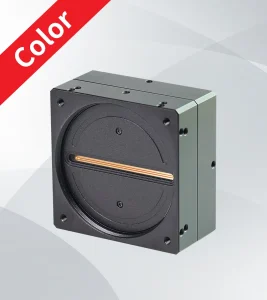Selecting the best USB3. Choosing the right USB 3.0 industrial camera for your application is not always easy, because each job has individual requirements in terms of resolution, speed and overall performance. USB3. 0 industrial camera: with its improved data transfer speed (up to 5 Gbps), plug-and-play feature, and cost-effective price INQMEGA PTZ Camera Subscribe Inqmega Is a Professional...
Resolution is one of the first thing to consider. Cameras with 5+ to 12+ megapixels or higher for detailed image capture (precision measurement, quality inspection etc). They find use in machine vision or automated optical inspection (AOI) systems, where better resolutions capture finer detail images. However, for other applications such as moving things like robotics or real-time monitoring a lower-resolution but higher frame rate camera may be adequate.
Again, frame rate is a big one. For industrial cameras deployed in high-speed applications such as automated production lines, frame rates of at least 100 fps or even faster are necessary to capture real-time data seamlessly, and not let any significant details slip past. However, cameras with frame rates of about 30 fps may also suffice and can be a more cost-effective solution for less-demanding applications such as static inspections or document scanning.
The sensor type matters a lot when it comes to image quality and performance. The sensor of USB3 is mostly CMOS. Those are Raspbery Pi 3Bs, with a limit of no industrial cameras but benefits for speed and energy. A 10 Mpixel camera using a CMOS sensor can acquire images at up to 120 frames/s, allowing it to be used on rapid develop high-speed manufacturing lines. CCD sensors (which read the image off at once) on the other hand, though slower to operate generally offer better low light sensitivity and are a much more common type of sensor used in scientific applications like fluorescence microscopes.
Another feature to think about is the shutter kind. Cameras with global shutters are important for applications where fast moving objects need to be inspected, as a whole image is captured at once in these cameras and hence there will not have any distortion due to the movement. Rolling shutters on the other hand will work well enough if you're working with mostly still objects and people or slower movements, they are a cheaper option without losing image quality in less fast-paced environments.
Its power consumption is a consideration, as well— an increasingly important one for those attempting to decrease the number of cables involved in wearables. Many USB3. Power over USB (PoUSB) prevents simplifies the installation and makes an additional power supply unnecessary since 0 industrial cameras are operated directly through the USB connection.

Along with this, budget constraints need due consideration. Entry-level USB3. Industrial – Level 0 industrial cameras: as below $400 Affordable, basic model;High resolution and high frame rate models may be over-priced (amounts >$2k) For some applications, you will need to balance cost with performance. This means that while a modest 5 MP camera is sufficient for slower, lower-resolution applications such as liquid-level measurement, higher-speed and/or high accuracy processes may benefit from the much larger image size to increase process efficiency /reduce error rates.
A USB3.0 industry survey in 2023 indicated that In terms of camera technology, 0 cameras were the most preferred among machine vision system integrators which can easily be integrated as well being highly versatile (64%). This is becoming in line with the trend toward USB3. Breath taking right? — I used to know the national head of sales for an industrial camera manufacturer who once told me they had never sold 1.
According to John Parker, senior product manager of industrial imaging systems at MathWorks: “The choice of the correct camera is not only related to resolution and frame rate; it depends on how you are going to integrate your camera into your system so that you have an optimum outcome.” This comprehensive method guarantees that your camera abides not exclusively by the technical aspects but also operational necessities.
When selecting the best USB3. To select the right 0 industrial camera for your application ensure that you evaluate the requirements of your specific use case, such as resolution, frame rate, sensor type or budget (table below). Read more about the models that are currently available at usb3. 0 industrial camera.